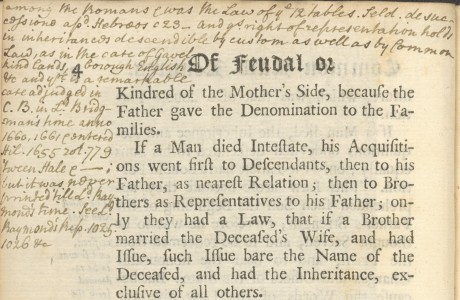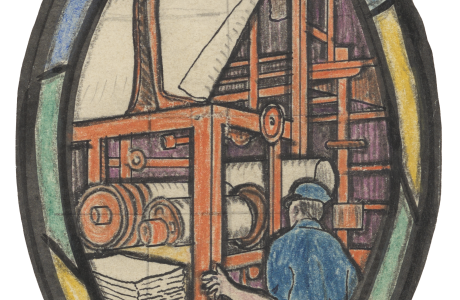Medieval Manuscripts in Law Book Bindings, no. 16

Fragment: Codex Iustiniani (Italy, probably Bologna)
Date: c. 1275-1325
Found in: Savoy (Duchy). Statuta Sabaudie. [Turin: Bernardus de Sylva, 1530.]

It was probably not mere coincidence that a leaf of the Corpus iuris civilis was used to cover this volume of legal statutes from the Duchy of Savoy. After all, Roman law as represented in the Corpus iuris civilis was the most influential source of legal thinking for medieval and early modern lawmakers. The Corpus iuris civilis was issued in three parts (the Codex, the Digest, and the Institutes) under the Emperor Justinian in 529-534. Issued from Constantinople at a time when the Roman Empire no longer had control over most of Western Europe, Justinian’s laws were introduced in Italy in the 550s, but fell out of use over the following decades. Late in the 11th century the Corpus iuris civilis was rediscovered and students in Bologna began to learn about the law of ancient Rome. The sophistication and scope of Roman law made it hugely popular, and along with canon law it was quickly adopted as the European common law (the ius commune).
The fragment displayed here is from the Codex Iustiniani, which was a collection of all the surviving imperial legislation issued since the time of the emperor Hadrian (d. 138). It contains all of Book 11, Title 1-3 and the beginning of Title 4. These passages contain regulations pertaining to the compulsory transport of public property by private ship-owners. Like the Bible (no. 2), the Liber extra (no. 17), and the Liber sextus (no. 18), the Corpus iuris civilis was heavily glossed in the Middle Ages. The gloss here has not been identified, but may be that of the Italian jurist Accursius (d. 1263) who compiled the most well-known gloss of the Corpus iuris civilis in the 1220s.
– Notes by Benjamin Yousey-Hindes, Stanford University
POSTSCRIPT: Thanks to Richard Rouse (UCLA) for clarifying the origin of the manuscript fragment, and to Susan L’Engle (Saint Louis University) for the following: “Very little gloss, so probably pre-glossa ordinaria. Initials are blue, stroked in red, typical of Italy/Bologna. Sentence capitals in 1-line red.”
Larger versions of this and other images are available from the Medieval binding fragments gallery of the Rare Book Collection’s Flickr site. If you can provide additional information about the manuscript fragment displayed here, you are invited to send an email to .[at]yale.edu>
“Reused, Rebound, Recovered: Medieval Manuscript Fragments in Law Book Bindings” is curated by Benjamin Yousey-Hindes and Mike Widener, and is on display through May 2010 in the Rare Book Exhibition Gallery, Level L2, Lillian Goldman Law Library, Yale Law School.


